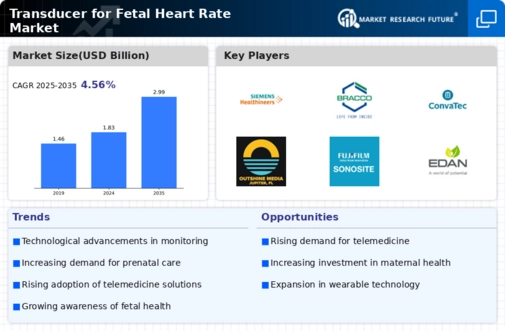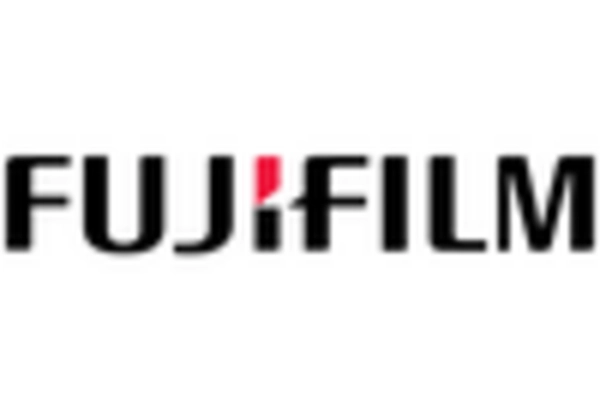Rising Birth Rates
The Transducer for Fetal Heart Rate Market is experiencing growth due to increasing birth rates in various regions. As populations expand, the demand for prenatal care rises, leading to a higher need for effective monitoring solutions. According to recent statistics, birth rates have shown a steady increase, particularly in developing regions, which drives the adoption of fetal monitoring technologies. This trend suggests that healthcare providers are likely to invest more in advanced transducer systems to ensure the health and safety of both mothers and infants. Consequently, the market for transducers is expected to expand as healthcare facilities seek to enhance their capabilities in fetal monitoring, thereby improving maternal and neonatal outcomes.
Technological Innovations
Technological advancements play a pivotal role in shaping the Transducer for Fetal Heart Rate Market. Innovations such as wireless transducers and enhanced signal processing algorithms have significantly improved the accuracy and reliability of fetal heart rate monitoring. These advancements not only facilitate better patient outcomes but also streamline the workflow in clinical settings. The integration of artificial intelligence and machine learning into fetal monitoring systems is also emerging, potentially revolutionizing how healthcare providers interpret data. As hospitals and clinics increasingly adopt these cutting-edge technologies, the demand for sophisticated transducers is likely to rise, further propelling market growth.
Regulatory Support and Standards
Regulatory support is a crucial driver for the Transducer for Fetal Heart Rate Market. Governments and health organizations are establishing stringent guidelines and standards for fetal monitoring devices, which enhances the credibility and safety of these products. Compliance with these regulations not only assures healthcare providers of the quality of transducers but also encourages manufacturers to innovate and improve their offerings. As regulatory bodies continue to advocate for better maternal and fetal health outcomes, the market for transducers is expected to benefit from increased investments in research and development. This regulatory environment fosters a competitive landscape, driving advancements in technology and product offerings.
Growth of Home Healthcare Solutions
The rise of home healthcare solutions is significantly impacting the Transducer for Fetal Heart Rate Market. With an increasing number of expectant mothers opting for home monitoring, the demand for portable and user-friendly fetal heart rate transducers is on the rise. This trend is driven by the desire for convenience and the ability to monitor fetal health in a comfortable environment. Manufacturers are responding by developing transducers that are not only effective but also easy to use at home. As the home healthcare market continues to expand, it is likely that the demand for innovative fetal monitoring solutions will grow, further propelling the transducer market.
Increased Awareness of Prenatal Care
There is a growing awareness regarding the importance of prenatal care, which is positively influencing the Transducer for Fetal Heart Rate Market. Educational campaigns and healthcare initiatives are emphasizing the necessity of regular monitoring during pregnancy, leading to heightened demand for fetal heart rate transducers. This awareness is particularly pronounced in urban areas, where access to healthcare services is more prevalent. As expectant mothers become more informed about the benefits of fetal monitoring, healthcare providers are responding by enhancing their offerings, thus driving the market for transducers. The increased focus on maternal health is likely to sustain this trend, ensuring continued growth in the industry.


















Leave a Comment